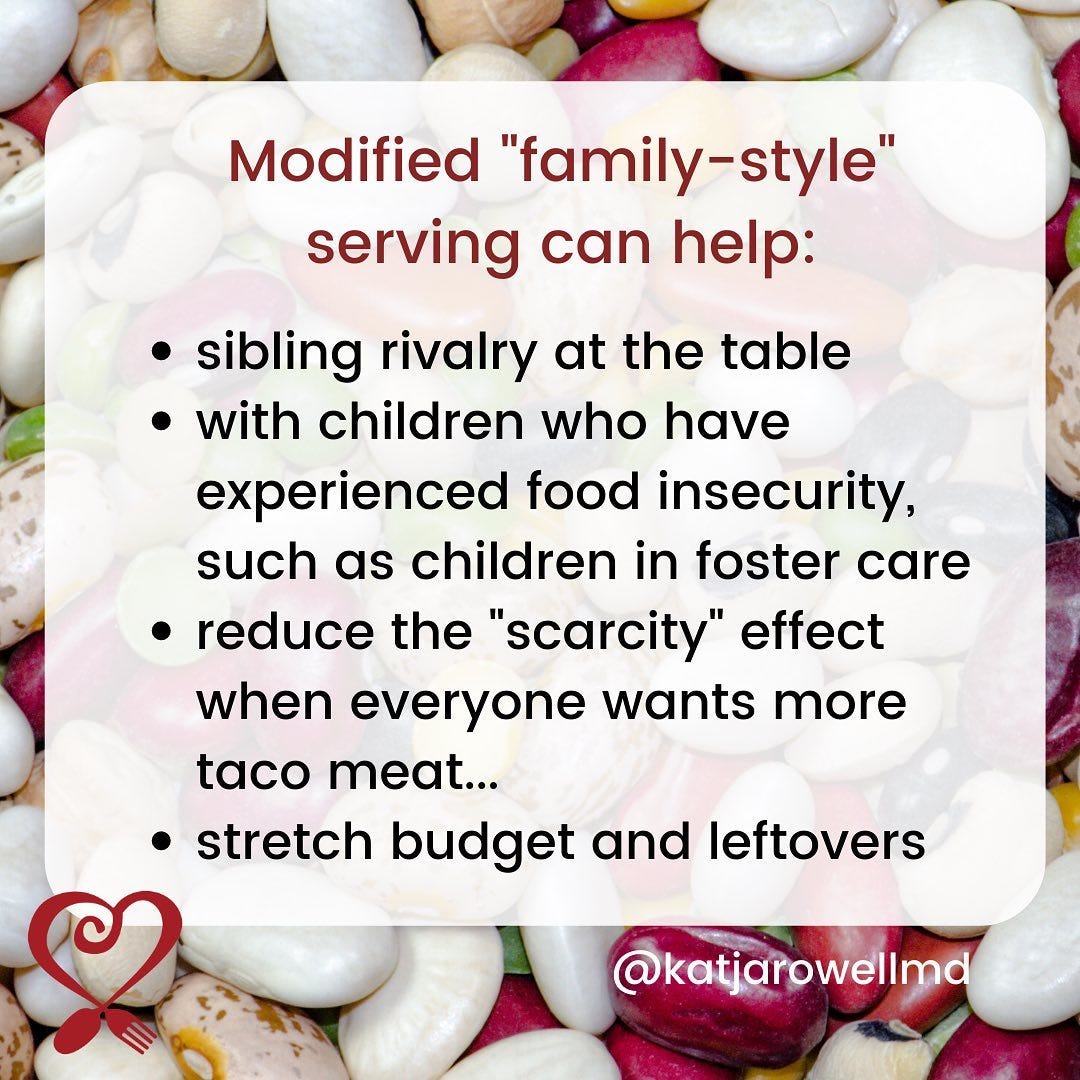Help Kids Feel Safer Around Food in a Scary World
If you spend any amount of time writing and thinking about kids' relationship with food and their bodies, a tip you'll run into early and often is to serve meals "family style." This means you stop pre-plating your kids' meals and instead let them serve themselves from the salad bowl or the pasta pot. It's a strategy that works really well with cautious eaters who like to be in control of what goes on their plate. I've written about it here and here.
But then came coronavirus.
Right now, nearly one in five children under the age of 12 aren't getting enough to eat, as I reported for the New York Times last week. This is three times the rate we saw reported during the Great Recession of 2008. Grocery budgets need to stretch further. The meal you put on the table might be smaller or need to make more leftovers. And kids are exquisitely aware of all of this. So if they're starting to develop what psychologists call a "scarcity mindset," you might want to try this "modified family style" approach, as outlined by the great Katja Rowell, MD on Instagram. Instead of putting everything in the middle of the table and making kids worry they need to elbow a sibling out of the way to get their share, pre-portion out any foods that you know will be highly coveted or in short supply, so everybody gets the same amount of taco meat, or guacamole for example. Then family-style serve a few other things if you can (like the shredded cheese or rice and beans).

Another idea that I love, but didn’t have space for in the final draft of the new column, came from Tianna Gaines-Turner, whose story is featured in the article. She’s doing “taste tests” with her kids, where she puts different kinds of chips, or cookies, or really whatever is left in the cupboard, on paper plates and everyone is blindfolded and takes tastes and has to guess what they’re eating. It’s such a smart way to still make food fun—because for kids, fun equals comfort!— even if you don’t have time/space/resources for elaborate cooking or baking projects right now.
These are the kind of very practical suggestions I don't see often enough in discussions of food insecurity, which seem to usually revolve around getting wealthier people to donate to food banks. Food banks are a critical part of our emergency food supply, don't get me wrong. But they are only one piece of the solution. They cannot address the root causes of food insecurity. And they cannot protect kids from the psychological fallout of living in a house without enough to eat. (In fact, the stigma around needing emergency food is so strong that memories of going to a food pantry are often among the most painful for folks who grew up hungry.)
We need to deal with the root causes of hunger, by increasing SNAP allotments (food stamps) to the poorest families, improving the systems we're using to get emergency food to families, and shoring up our country's safety net in many other ways. And we also need to deal with the emotional impact of what's happening right now, before scarcity mindset and restriction start to permanently rewrite how kids relate to food and their bodies. I hope you'll read and share this piece; it's very, very close to my heart.
P.S. If Tianna's story resonates with you and you'd like to read more, she's also featured in Chapter 5 of my book.
ALSO
In these times: The Comfort Food podcast is on hiatus, but our last new episode covered how we're working, parenting and feeding our families, and ourselves, while in the isolation trenches. We talked about ways to make the same old kid meals a little more fun right now, my Meal Prep for Lazy People strategy, and the rising problem of food insecurity and what we can all do to help. Listen here.
In related news: Hundreds of New York City public housing residents are without cooking gas during a pandemic, my assistant Jessica McKenzie reports for Gothamist. I can’t imagine how difficult this would be for young families. How are you going to heat up a bottle for a baby and prepare dinner for the rest of the family at the same time? It also underscores how problematic it is that SNAP can't be used at McDonald's, or even on, say, the rotisserie chicken at the grocery store. In most states you can only buy raw chicken with food stamps—no prepared foods. If you only have a hot plate, how the hell do you roast a chicken?! There’s so much privilege in cooking when there should not be. Read her story here.
Finally:



You're reading Burnt Toast, Virginia Sole-Smith's monthly newsletter. Virginia is a feminist writer, co-host of the Comfort Food Podcast, and author of The Eating Instinct. Comments? Questions? Email Virginia.
If a friend forwarded this to you and you want to subscribe, sign up here.



